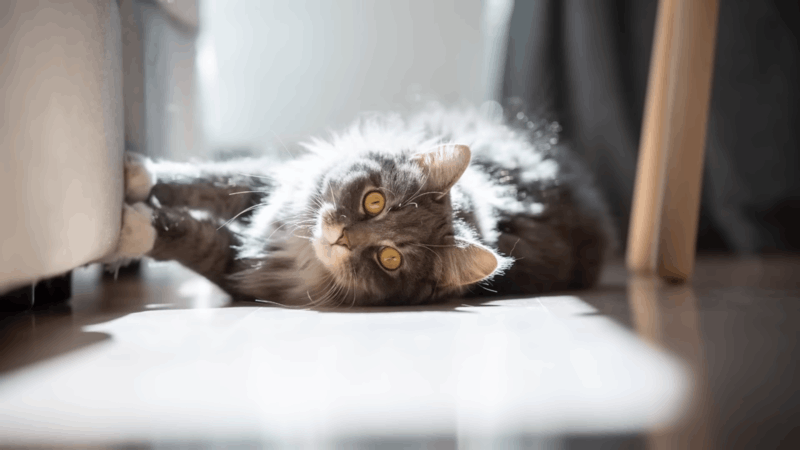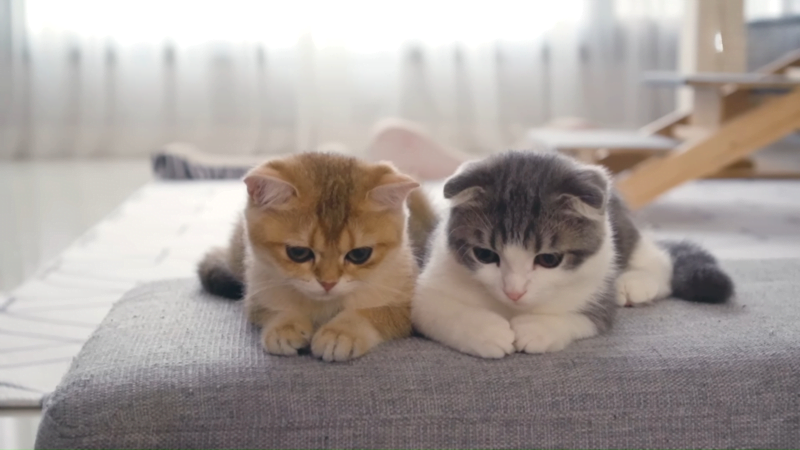No products in the cart.
Seizures in cats can be a distressing and alarming experience to witness as a pet owner. It’s a distressing sight to witness abnormal electrical activity in their precious little brains. These sudden bursts of uncontrollable electrical activity disrupt their normal brain function and leave both you and your furry friend feeling helpless. The potential advantages of CBD for controlling seizures have come to light in recent years.
In this blog, we will discover the definition of seizures in cats, what causes seizures in cats, explore their impact on feline health, examine CBD for cat seizures, can CBD help with seizures in cats, and the potential role of CBD in alleviating seizure-related symptoms.
Seizures in Cats
Cat seizures, commonly referred to as feline epilepsy, are periods of aberrant brain electrical activity. They can be brought on by a variety of conditions, including idiopathic epilepsy, metabolic problems, viral infections, toxins, anatomical abnormalities of the brain, and metabolic disorders. An abrupt, uncontrolled surge of electrical activity that prevents the brain from functioning normally causes seizures.

What Do Seizures Look Like in Cats?
Cats may exhibit various signs and behaviors during seizures. Depending on the nature and severity of the seizure, its specific look can change. Here are some common signs that may be observed during a seizure in cats
- Muscle twitching or jerking: The cat’s muscles may twitch or jerk involuntarily. Any area of the body might experience these motions, which can either be localized or have an overall impact on the body.
- Loss of consciousness: Cats may appear dazed or unaware of their surroundings during a seizure. They may collapse or fall to the ground.
- Unusual vocalizations: Some cats may vocalize loudly or make strange sounds during a seizure. These vocalizations can range from meowing to growling or yowling.
- Salivation and drooling: Excessive drooling or foaming at the mouth is commonly observed during seizures.
- Uncontrolled movements: Cats may paddle their legs, exhibit repetitive motions, or have uncoordinated movements such as running in circles.
- Urination or defecation: Some cats may lose control of their bladder or bowels during a seizure.
It’s crucial to remember that seizures can range in length and severity. After a seizure, cats may appear disoriented, tired, or confused. They may seek comfort or display clingy behavior.
The Impact of Seizures on a Cat’s Overall Health
The general health and happiness of a cat can be greatly impacted by seizures. Some potential effects include:
- Injury risk: During a seizure, cats may injure themselves by falling, hitting objects, or experiencing muscle spasms. These injuries can range from minor bruises to more severe trauma.
- Physical exhaustion: Seizures can be physically exhausting for cats, leaving them fatigued and weak afterward.
- Cognitive impairment: frequent or prolonged seizures can lead to cognitive decline in cats. Memory problems, decreased awareness, and changes in behavior and personality may occur.
- Underlying health conditions: seizures can be a sign of various medical conditions, including brain tumors, infections, and metabolic abnormalities. Treating the underlying cause is crucial to managing the seizures and maintaining the cat’s health.
- Medication side effects: Side effects of medications, like drowsiness, increased thirst, changes in appetite, or other unfavorable reactions, will have an effect on a cat’s general health.
- Emotional stress: Seizures can be distressing for both cats and their owners. The unpredictability and potential discomfort associated with seizures can cause anxiety or stress in affected cats.
Differentiating Seizures From Other Conditions
Differentiating seizures from other conditions in cats involves closely observing the symptoms and understanding their origins. Here’s a focused guide to help distinguish seizures from similar conditions:
| Condition | Symptoms | Key Differentiators |
| Seizures | Sudden collapse, twitching, loss of consciousness | Often has no clear trigger, repetitive movements, loss of consciousness |
| Fainting | Collapse, brief loss of consciousness | Triggered by stress or heart problems, quick recovery |
| Vestibular Disease | Head tilting, unsteady walk, nystagmus | Presence of eye movements (nystagmus), no loss of consciousness |
| Hypoglycemia | Weakness, trembling, possible collapse | Often related to missed meals or excessive exercise in diabetic cats |
| Syncope | Brief collapse, loss of consciousness | Often associated with heart disease, triggered by excitement or exertion |

Can CBD Help With Seizures?
In general, CBD (cannabidiol) has shown potential for helping with seizures in cats. While there is limited scientific research specifically focused on cats, anecdotal evidence and some preliminary studies suggest that CBD may have anticonvulsant properties for feline seizures. Like people and other mammals, cats have an endocannabinoid system that interacts with cannabinoids like CBD, suggesting that it may be useful.

How CBD May Help Regulate Seizures
CBD can potentially help regulate seizures in cats through its interaction with the endocannabinoid system (ECS). The ECS plays a crucial role in maintaining balance and regulating various physiological processes, including neuronal activity. CBD is believed to modulate the ECS, reducing excessive neuronal excitability and abnormal electrical activity in the brain, which can contribute to seizures.
Safety Considerations When Using CBD for Cats With Seizures
Prioritizing their safety is crucial when thinking about using CBD for cats that are experiencing seizures. Here are some key considerations:
- Consultation with a veterinarian: It is crucial to consult with a veterinarian experienced in using CBD cat oil. They can provide guidance on proper dosing, potential interactions with other medications, and any specific considerations for your cat’s individual health and condition.
- Quality and source of CBD products: Choose high-quality CBD products specifically formulated for pets. Look for products that have undergone third-party testing to ensure their safety, purity, and accurate CBD concentration. Avoid using CBD products intended for humans, as they may contain ingredients or concentrations unsuitable for cats.
- Start with low doses: Begin with a low dose of CBD and gradually increase it as needed while closely monitoring your cat’s response. Each cat may have a different sensitivity to CBD, so finding the optimal dose may require some trial and error.
- Monitoring for adverse effects: Keep a close eye on your cat’s behavior and overall well-being when starting CBD. Even though CBD is typically well tolerated by cats, some of them could develop drowsiness, changes in appetite, or gastrointestinal problems. Adjust the dosage or stop using the product in cooperation with your veterinarian if any negative effects appear.
Conclusion
Seizures in cats can potentially be improved and managed with CBD, which has shown promising potential in controlling seizure activity. Its interaction with the endocannabinoid system may aid in controlling seizure-causing aberrant brain activity. It’s crucial to remember that every cat is different, and CBD might not function the same way for everyone. Consulting with a veterinarian experienced in CBD use for pets is crucial to ensure proper dosing and to address any potential concerns or interactions with other medications
I am Nelson Cooper, I pursue my passion for writing and my belief is that cats love humans. I enjoy traveling and have a deep appreciation for the beauty of nature, as well as a soft spot for animals, particularly cats.



